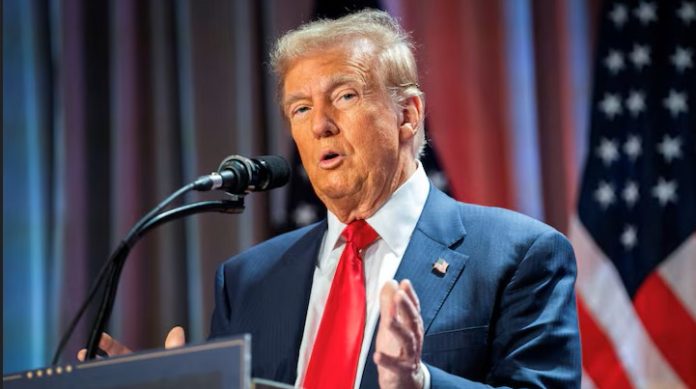President Donald Trump’s administration has dramatically escalated trade tensions by imposing heavy new tariffs on Chinese goods, some of which are as high as 245%. The rising economic and geopolitical competition between the United States and China is the driving force behind this audacious move, which marks a new chapter in Trump’s “America First Trade Policy.”
Late Tuesday, the White House released a fact sheet outlining how these penalties are a direct response to China’s recent actions. By imposing export restrictions on crucial raw minerals like gallium, germanium, and antimony as well as rare earth magnets and six heavy rare earth elements—items essential to the semiconductor, aerospace, and defense industries—Beijing has been showing off its power.
This strong reaction is a result of the U.S.’s perception that China is using its supply chain dominance as a weapon. “China now faces up to a 245% tariff on imports to the United States because of its retaliatory actions,” the White House stated.
Karoline Leavitt, the press secretary for the White House, added that although President Trump is amenable to a trade agreement with China, he is waiting for Beijing to initiate this increasingly heated tariff spat.
What’s Hard Hit: A More Detailed Look at Tariffs
Needles and syringes: 245%
Lithium-ion batteries: 173%
Seafood: 170%
Wool sweaters: 169%
Plastic dishes: 159%
Toasters: 150%.
Electric vehicles: 148%
Toys, dolls, and puzzles: 145%
Vitamin C: 145%
Car wheels: 73%
Semiconductors: 70%
Metal furniture: 70%
Car door hinges: 67%
Laptops: 20%
Children’s books: 0%
These tariffs have enormous knock-on effects that affect everything from clothing to electronics and medical equipment.
Examining the Specifics:
Devices and Cell Phones
According to the U.S. Commerce Department, electronics, including TVs and mechanical appliances, account for 46.4% of all imports from China in 2022, including smartphones and accessories. More over 80% of the $52 billion worth of cellphones imported into the United States in 2024 came from China. These were initially subject to 145% taxes, but new customs regulations exempted phones and laptops from a reciprocal 125% levy. They are nevertheless forced to pay a 20% total tariff, which builds up over time (0% base + 20% fentanyl-related penalty).
Furniture, Clothes, and Toys
China is a major supplier of consumer products, furniture, and textiles, accounting for more than 50% of toys, furniture, and almost 30% of U.S. textile imports. Up until now, items like tricycles and plush animals were duty-free, which kept costs down. Toys are no longer a deal, though, because to a new 145% tax (0% base + 20% fentanyl penalty + 125% reciprocal). Wool sweaters and other clothing are now subject to a staggering 168.5% total tax (16% base + 7.5% pre-2025 + 20% penalty + 125% reciprocal), which significantly raises the cost of wardrobes.
Conclusion: Companies will have to assess their supply chains to ascertain the damage as these tariffs are not universal; they vary by product, material, and exclusions. EV makers, electronic companies, and energy storage companies that rely on Chinese suppliers will suffer from the 173% tariff on lithium-ion batteries. What about the 70% semiconductor duty? For American computer companies already dealing with chip shortages, that presents even another challenge.
It’s a complicated problem, and if businesses pass it on, the true cost may end up on customers. The United States and China are currently engaged in a high-stake game of chess.








